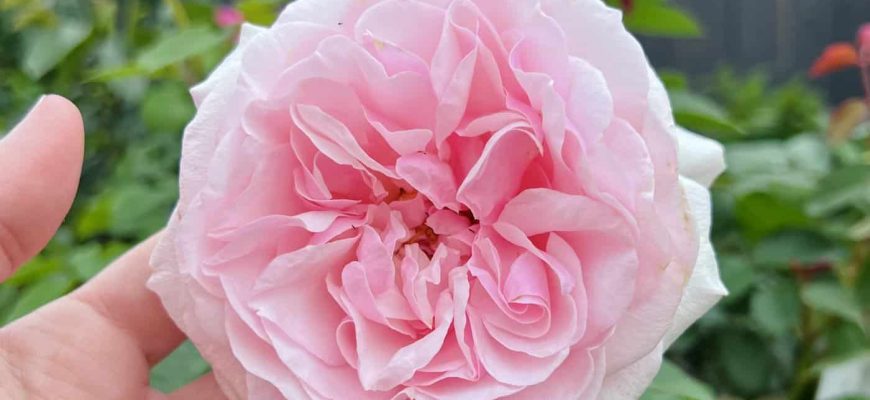As a garden enthusiast, you may have heard of the exquisite Olivia Rose Austin, an exceptional variety created by David Austin Senior. This rose is known for its early blooming season and stunning soft pink blooms with a captivating fragrance. In this blog post, we will delve into the characteristics of Olivia Rose Austin, discussing everything from growing conditions to companion plants.
The ‘Olivia Rose Austin’ rose is a shrub rose cultivar known for its voluminous, fragrant pink flowers. The bloom color is a medium pink and the scent is somewhat fruity. Mature plants reach about 4-5 feet tall and 3-4 feet wide, depending upon growing conditions. This variety is known for its disease resistance and reliability in the garden.
We’ll explore essential care tips such as ideal soil type, sunlight requirements, watering frequency, and pruning techniques to ensure your roses thrive in your garden space. Additionally, we’ll cover disease resistance and hardiness qualities that make Olivia Rose Austin suitable for diverse climates.
Finally, we will provide valuable planting tips, techniques, and suggested companion plants to enhance your overall garden design. To top it off, we’ll discuss the importance of selecting quality sources when purchasing roses like Olivia Rose Austin and highlight the advantages of buying from renowned growers like David Austin Roses.
- Introduction to the Olivia Rose Austin rose
- Early bloomer compared to other varieties
- Beautiful and fragrant soft pink blooms
- Growing conditions for a thriving plant
- Ideal soil type for optimal rose plant growth
- Sunlight requirements for good health
- Watering frequency in the garden
- Pruning techniques to encourage blooming
- Disease resistance and cold-hardiness
- Resistant against common rose diseases like blackspot or rust
- Hardy plant suitable for diverse climates
- Planting a new Olivia Rose Austin rose plant
- Choosing an appropriate location in the garden
- Soil preparation before planting
- Spacing guidelines between multiple bushes
- Companion plants for your garden design
- Suggested companion plants for Olivia Rose Austin
- Benefits of incorporating companion plants
- Purchasing your Olivia Rose Austin plant
- Importance of choosing reputable garden centers
- Is Olivia Rose Austin disease resistant?
- What are the black spots on David Austin roses?
- How do you prune Olivia Rose Austin?
- What’s so special about David Austin roses?
- Before you go…
Introduction to the Olivia Rose Austin rose
The ‘Olivia Rose Austin’ is an English shrub rose with pink flowers named after the daughter of David Austin Junior and granddaughter of David Austin Senior. This stunning rose variety is known for its exceptional early flowering in the season, making it a popular choice among gardeners and enthusiasts. It is also known for its strong fragrance and cold hardiness. This cultivar was introduced by David Austin Roses in 2014.
‘Olivia Rose Austin’ is a repeat flowering rose that begins flowering quite early in rose season (typically late spring) and flowers until frost. The blooms are large (90 petals each), with a medium-pink color and a light-medium fruity scent.
‘Olivia Rose Austin’ is classified as a shrub rose. The plant grows to an expected mature height of 4.5 feet tall and 3.5 feet wide. This cultivar can be grown in USDA plant hardiness zones 5-11.
Early bloomer compared to other varieties
This rose is distinguished by its propensity to bloom before other varieties, making it an ideal selection for those seeking early-season color and fragrance. The Olivia Rose Austin typically starts producing flowers in late spring or early summer, providing a burst of color and fragrance when many gardens are just beginning to come alive. This characteristic makes it an excellent addition to any landscape where you want continuous blooms throughout the warmer months.
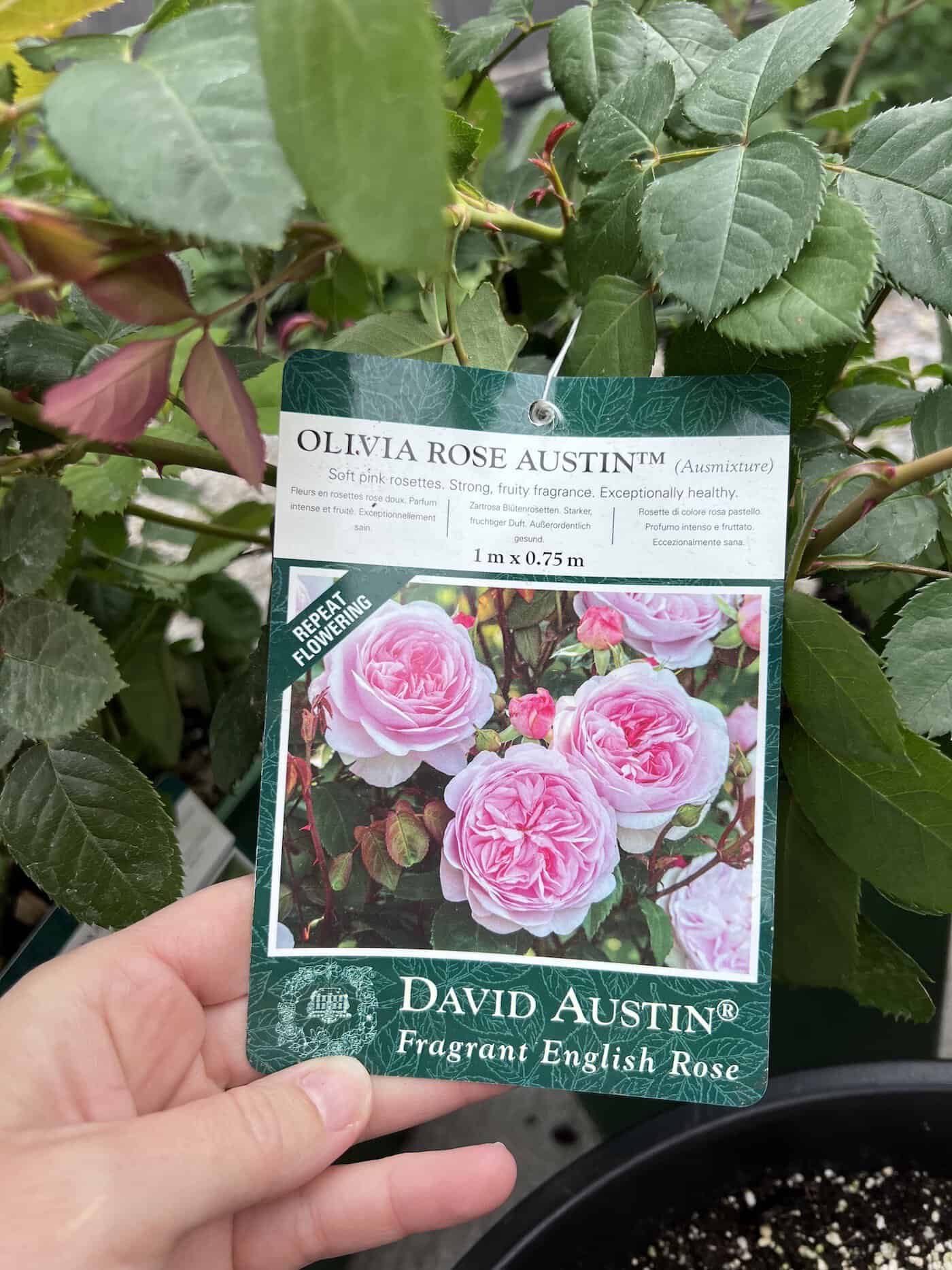
Beautiful and fragrant soft pink blooms
Beyond its impressive blooming capabilities, what truly sets this rose variety apart is its gorgeous soft pink petals that form full rosettes. These delicate blooms emit a strong fruity fragrance reminiscent of apples and pears, adding another layer of sensory delight for anyone who encounters them.
- Bloom size: Large-sized flowers measuring approximately 3 inches across when fully open.
- Petal count: Around 90 petals per flower – giving each bloom a lush appearance.
- Fragrance strength: Light-medium fragrance strength (for a stronger scent in a pink David Austin rose, consider Princess Alexandra of Kent or Gentle Hermione).
If you’re looking for a show-stopping centerpiece or border plant that offers both visual appeal and a delightful scent, the Olivia Rose Austin is an excellent choice for your garden.
Growing conditions for a thriving plant
The Olivia Rose Austin thrives when provided with the right growing conditions, which in turn rewards you with abundant flowering throughout the season. Let’s explore the essential factors that contribute to a healthy and flourishing rose bush.
Ideal soil type for optimal rose plant growth
Well-drained soil is crucial for this beautiful shrub rose. A mix of loamy or sandy loam soil enriched with organic matter ensures proper drainage while providing necessary nutrients for vigorous growth.
Sunlight requirements for good health
Adequate sunlight plays a significant role in promoting healthy blooms. The Olivia Rose Austin requires at least 6 hours of direct sunlight daily, so make sure to choose a sunny spot in your garden where it can bask under the sun’s rays.
Watering frequency in the garden
Maintaining consistent moisture levels is key to keeping your roses happy and hydrated. Water your Olivia Rose Austin deeply once or twice weekly, depending on weather conditions and rainfall amounts. Make sure not to overwater, as this may lead to root rot issues.
Pruning techniques to encourage blooming
- Routine Pruning: Regularly remove dead or damaged stems during springtime after new growth appears by cutting them back just above an outward-facing bud using sharp pruning shears.
- Selective Thinning: Encourage air circulation within the plant by thinning out crowded branches every few years.
- Bloom Maintenance: Deadhead spent flowers regularly throughout summer months by snipping off faded blooms to encourage new ones.
By following these simple care guidelines, you’ll be well on your way to nurturing a stunning Olivia Rose Austin that will grace your garden with its beauty for years to come.
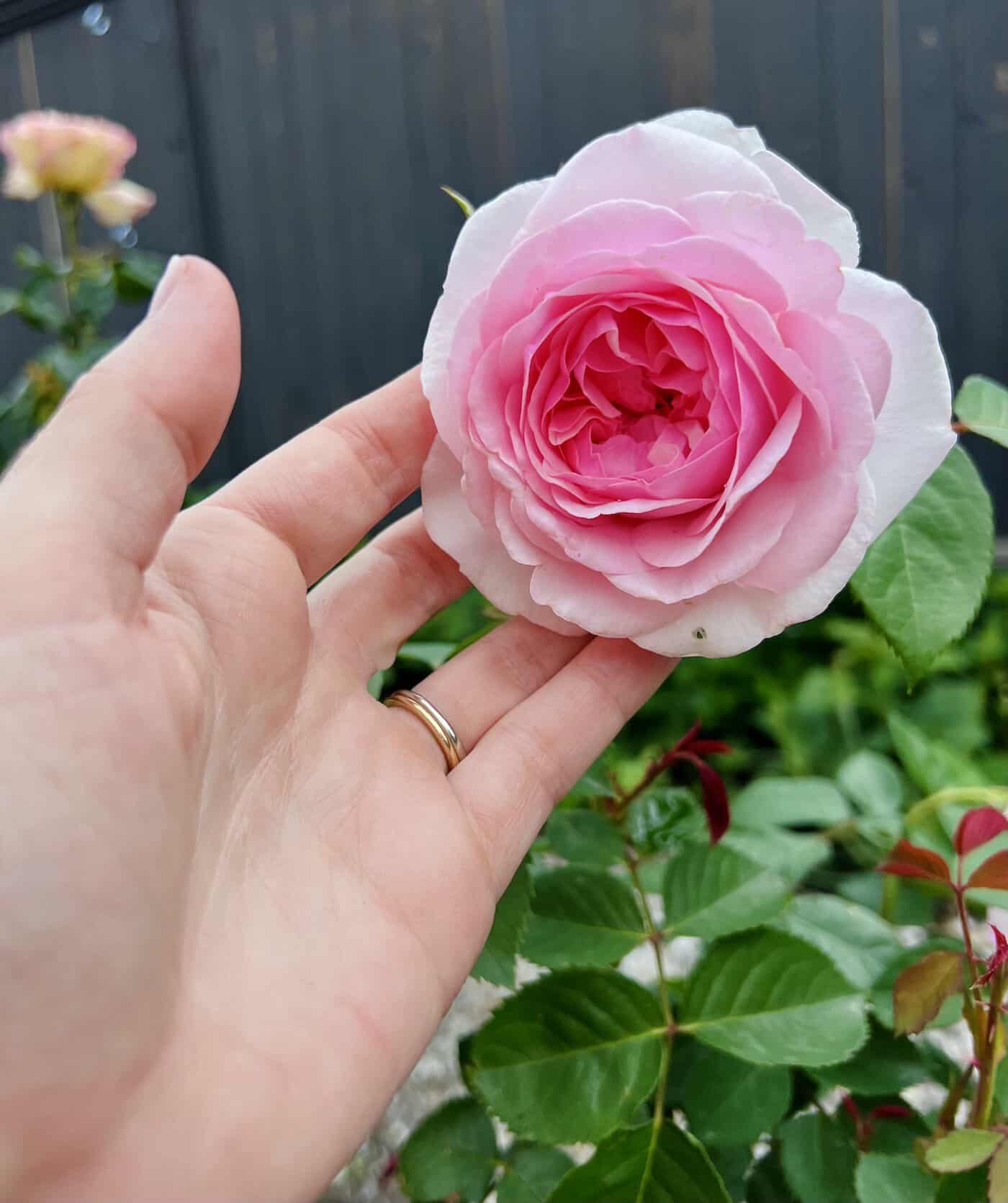
Disease resistance and cold-hardiness
One key feature of the Olivia Rose Austin is its impressive disease resistance, making it easier to care for than other varieties. This hardy shrub can withstand various weather conditions while maintaining its beauty throughout different seasons.
Resistant against common rose diseases like blackspot or rust
The Olivia Rose Austin is resistant to common rose diseases such as blackspot, powdery mildew, and rust. This characteristic allows gardeners to enjoy a stunning display without constantly worrying about treating these pesky problems. Regularly inspecting your roses for signs of disease will help you catch any issues early on before they become severe.
Hardy plant suitable for diverse climates
This beautiful English shrub rose is known for its exceptional blooms and its remarkable hardiness in various climate zones. The Olivia Rose Austin thrives in USDA Plant Hardiness Zones 5 through 9, making it an ideal choice for gardens across North America (find your zone here). Its ability to adapt well to different temperatures ensures that you’ll have a gorgeous addition to your garden regardless of where you live.
- Sunlight: Ensure that your Olivia Rose Austin receives at least six hours of direct sunlight daily to produce abundant blooms throughout the season.
- Cold Tolerance: Although this variety has good cold tolerance, providing extra protection during harsh winters by mulching around the base or using frost covers may be beneficial.
- Heat Tolerance: In regions with hot summers, consider planting your roses in a location that offers some afternoon shade to help protect them from extreme heat.
By understanding the disease resistance and hardiness of the Olivia Rose Austin, you can confidently choose this stunning rose variety for your garden and enjoy its captivating beauty season after season.
Planting a new Olivia Rose Austin rose plant
Proper planting techniques are crucial when introducing an Olivia Rose Austin into your garden landscape. From selecting the perfect location to preparing the soil correctly before planting – every step plays an essential role in ensuring the successful establishment of this beautiful shrub rose.
Choosing an appropriate location in the garden
The Olivia Rose Austin thrives best in a sunny spot with at least 6 hours of sunlight daily. When deciding on where to plant, consider areas with good air circulation and enough room for growth, as these roses can reach up to 4 feet tall and wide. Avoid low-lying spots or places near large trees that may compete for nutrients and water.
Soil preparation before planting
Preparing the soil before planting your rose bush is important to provide optimal growing conditions. Start by digging a hole about twice as wide and deep as the root ball, then mix equal parts of well-draining garden soil with organic compost or aged manure. This will create a nutrient-rich environment for healthy root development and improve drainage.
Spacing guidelines between multiple bushes
- Proper spacing is key if you create a stunning display with several Olivia Rose Austin bushes. Allow approximately 36 inches (90 cm) between each plant (as measured from the center of one bush to the center of the next bush) so they have ample room to grow without overcrowding.
- Maintaining adequate distance also helps prevent diseases from spreading easily among plants.
- Incorporate other companion plants like lavender or catmint in-between roses for added visual interest and pest control benefits.
With careful planning and attention to detail, your Olivia Rose Austin will soon become a breathtaking focal point in your garden. Happy planting.
Companion plants for your garden design
When designing your garden layout around an exquisite centerpiece like the Olivia Rose Austin, consider incorporating companion plants that complement both visually and aesthetically. These complementary plantings can enhance the overall garden appeal and create a harmonious environment for your roses to thrive.
Suggested companion plants for Olivia Rose Austin
- Allium: Their tall, round blooms add a touch of whimsy while contrasting beautifully with the soft pink petals of the Olivia Rose Austin.
- Lavender: This fragrant herb adds lovely purple hues and helps deter pests from feasting on your precious roses.
- Salvia: Available in various colors, salvias bring texture and height to your rose bed, creating an eye-catching display.
- Nepeta: The delicate blue flowers contrast wonderfully with the pink tones of Olivia Rose Austin while attracting beneficial pollinators to your garden.
Benefits of incorporating companion plants
- Pest Control: Introducing different plant species into your garden design can naturally deter pests and reduce the need for chemical treatments.
- Improved Soil Health: Diverse plantings help maintain soil fertility by reducing nutrient depletion and encouraging beneficial microorganisms.
- Better Pollination: Various flowering plants will attract more pollinators, ensuring your nearby plants (looking at you, pumpkins) receive adequate pollination for optimal growth.
- Aesthetic Appeal: Incorporating a mix of companion plants creates visual interest in your garden, making it an inviting space to enjoy throughout the seasons.
Incorporating complementary companion plants into your garden design can enhance the beauty of your Olivia Rose Austin while providing numerous benefits. By selecting suitable companions that pair well with this stunning rose variety, you’ll create a harmonious and thriving environment for all inhabitants to flourish.
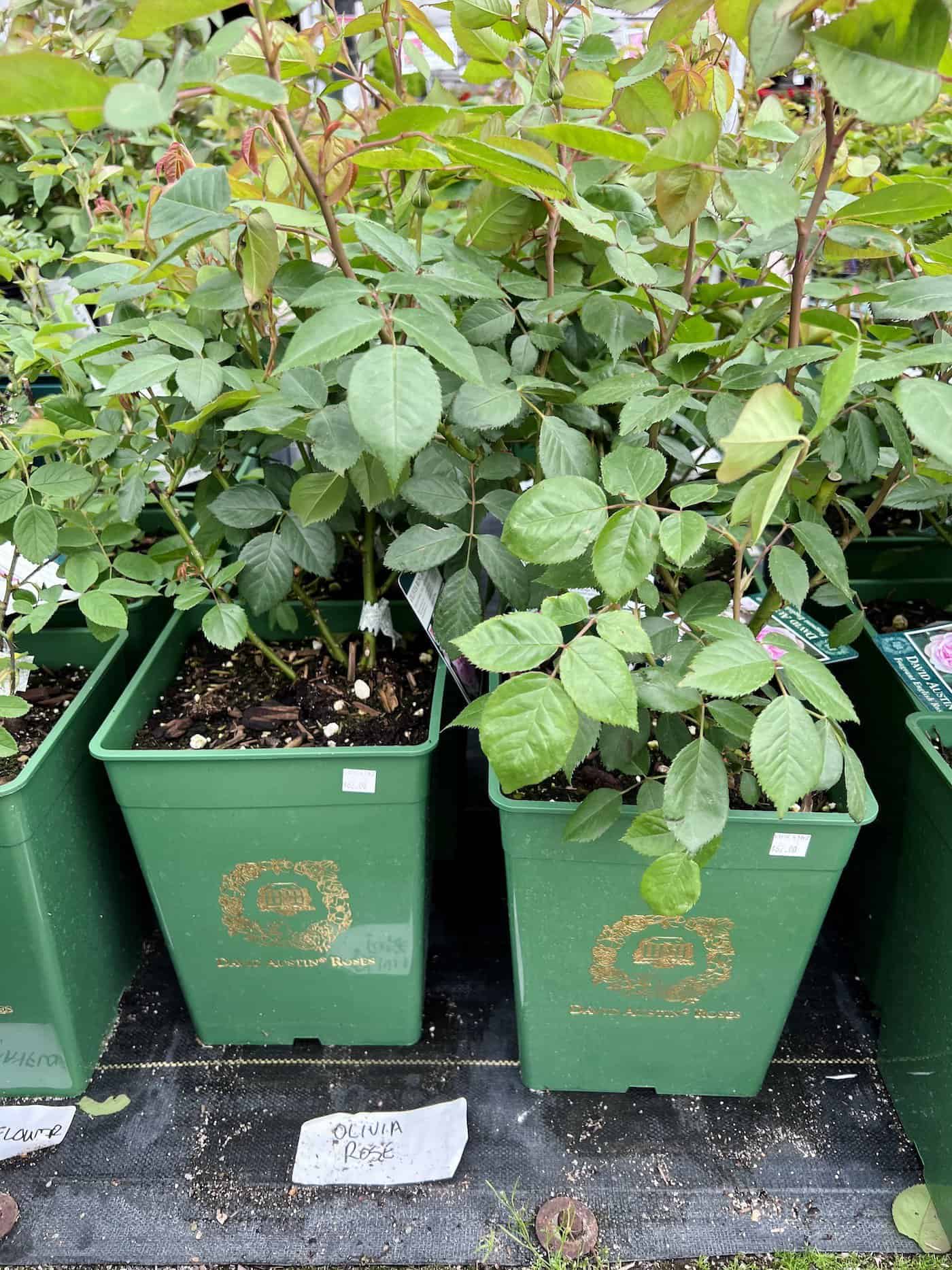
Purchasing your Olivia Rose Austin plant
When purchasing an Olivia Rose Austin plant, choosing a reputable source that guarantees healthy plants and offers expert aftercare support is essential. In this section, we’ll discuss the importance of selecting quality sources when purchasing roses and the advantages of buying from David Austin Roses.
Importance of choosing reputable garden centers
- Healthy Plants: A reliable nursery ensures that you receive vigorous, disease-free plants ready for successful growth in your garden.
- Gardening Advice: Knowledgeable staff can provide valuable tips on planting, care, and maintenance specific to your chosen rose variety.
- Credibility: Established nurseries have built their reputation by consistently delivering high-quality products and services over time.
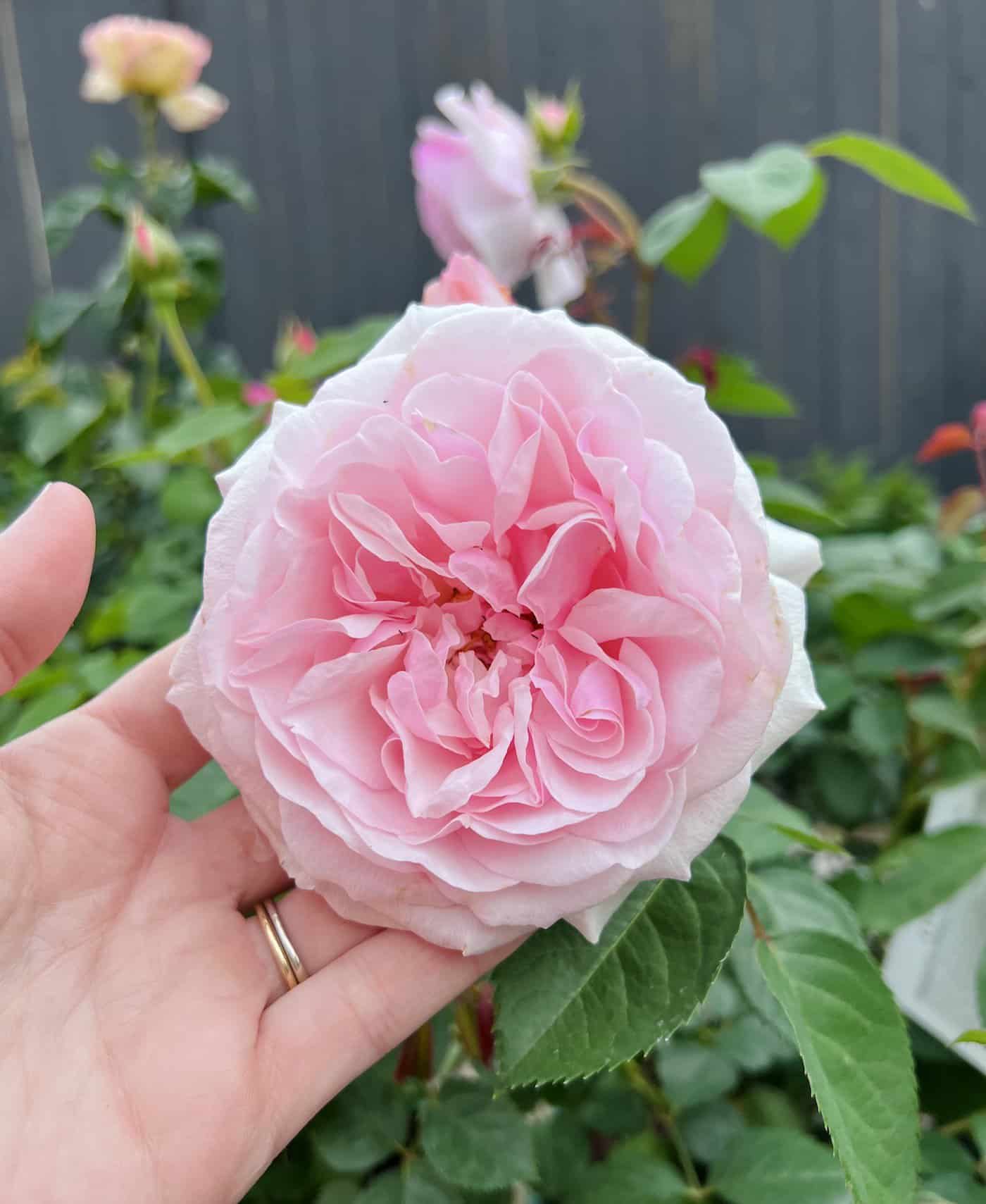
Is Olivia Rose Austin disease resistant?
Yes, Olivia Rose Austin is highly disease-resistant. It exhibits strong resistance against common rose diseases such as blackspot and rust, making it an excellent choice for gardeners seeking a low-maintenance yet beautiful rose variety.
What are the black spots on David Austin roses?
The black spots on David Austin roses may be symptoms of a fungal disease called blackspot. This can cause leaves to yellow and fall off prematurely. However, many David Austin varieties like Olivia Rose Austin have been bred for increased resistance to this common issue.
How do you prune Olivia Rose Austin?
To prune your Olivia Rose Austin:
1. Cut back dead or damaged stems in late winter or early spring
2. Maintain an open center by removing crossing branches
3. Trim side shoots to two or three buds from their base
4. Cut back old wood by one-third each year to encourage new growth
What’s so special about David Austin roses?
David Austin Roses are renowned for their unique combination of classic Old-World charm with modern breeding techniques. They offer exceptional beauty through their large, fragrant blooms and diverse color palette while also providing improved disease resistance and hardiness compared to traditional rose varieties.
Before you go…
Olivia Rose Austin is a beautiful and fragrant rose that blooms early in the season. This hardy plant can resist common diseases and thrive in diverse climates with proper care. When planting Olivia Rose Austin, choosing an appropriate location within your garden space is important, as is preparing the soil before planting and following spacing guidelines between multiple bushes. Incorporating companion plants into your garden design can also enhance the beauty of Olivia Rose Austin.
